There are a number of reasons to pay attention to the health and size of your Account Engagement powered by Pardot database. Unfortunately, users can get so caught up launching campaigns, setting up Engagement Studios, publishing landing pages, and so on, they neglect the less exciting task of maintaining a healthy database.
While this might not be the end of the world if you’re in the earlier days of building your prospect database, it will come back to bite you at a later date. Actually, if you can implement best practice data hygiene and management from the start, you’ll reap the rewards!
Why care about a clean Pardot database?
- Eventually, you’ll hit your mailable prospect database limit. This means you’ll either need to purchase additional database capacity, or take on the mammoth task of cleaning 10,000+ records to remove prospects and bring your account back within its database limits.
- Your deliverability and email open rates will suffer. Chances are, there are prospects within your database that have incorrect email addresses that bounce when contacted. Repeatedly sending emails to bounced addresses harms your sender reputation, which can affect your emails reaching recipient’s inboxes.
- Reporting can become skewed. It’s no use sharing the number of prospects in your database as a KPI if a quarter of those are bad data or unresponsive i.e. they never open emails or interact with your brand. It might look great on the surface but when the C-suite interrogates further and asks why there are so few leads given the size of the database, it’ll do more harm than good.
Database best practices
1. Standardise form fields
The easiest way to stay on top of a healthy database is to set up the forms that collect data points so these do the heavy lifting for you. When building a new Pardot form, you have multiple options for the field ‘Type’:
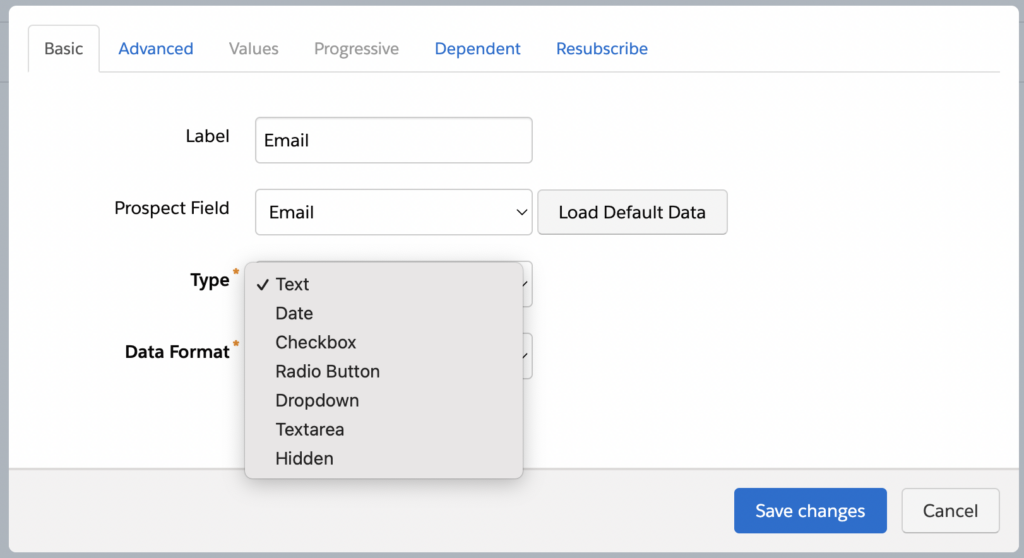
Don’t simply use Text and allow free-form entries that will vary from submission to submission. Wherever possible, use predefined answers and allow users to select from these. This will ensure there aren’t erroneous answers provided just to get behind the gate and access downloads.
For example, if you have a field for ‘Industry’, use the Dropdown to provide a selector of industries. Likewise, you can use the ‘Data Format’ option to ensure the answers meet rules for that field such as being a valid email address, including text only and not numbers, etc.
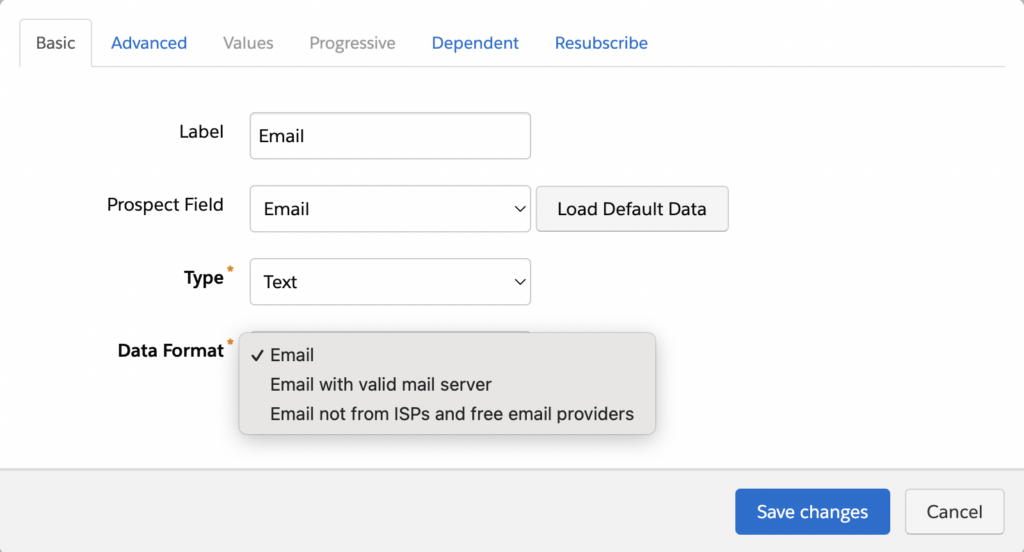
Standardising your data collection across forms is vital to ensuring you have a healthy database full of prospect information that is valid and can be used for segmentation, campaigns and the like. It prevents the database being bloated with rogue, fake prospects.
2. Manage inactive prospects
If a prospect has existed in the database for some time but hasn’t engaged recently, you should be proactively trying to re-engage them or classifying them as ‘inactive’.
With Engagement Studio this is super easy. Simply set up a journey that targets prospects who are marked as ‘Never Active’ or who haven’t interacted with your business in a set period of time. The goal is to convert these cold prospects into active prospects by encouraging them to either confirm they still want to receive emails, or driving them to visit the website or a digital resource - whichever action you prefer.
Any prospects who don’t engage can be written off as useless, at least for now. See the next point for what to do with them!
3. Send prospects to the Recycle Bin
Items you put in the Recycle Bin do not count towards usage limits.
What’s great about sending prospects here is that they are not deleted or removed forever. They will exist in the Recycle Bin until you either retrieve them or they engage by clicking a link in a previously sent email, or submitting a form, at which point Pardot will automatically remove them from the Recycle Bin and they will form part of your main database again.
You can move prospects to the Recycle Bin manually by navigating to the individual prospect record and hitting ‘’Delete’, or by creating a list of prospects to delete and using Prospect Table Actions to mass delete them.
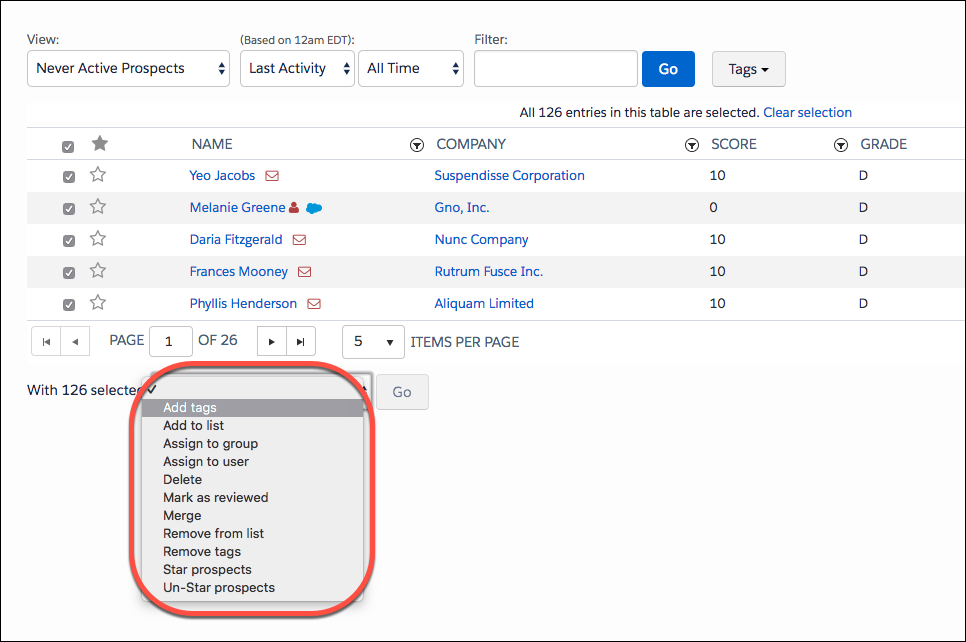
Source: Salesforce
As a side note, it is possible to permanently delete prospects from your Pardot account if required for compliance purposes i.e. they’ve requested a full deletion. You can learn more about this and using the Recycle Bin in this blog post.
4. Run a quarterly audit
We’re big fans of regular account audits because this is by far the best way to stay on top of things like usage limits, sync errors, overlap in Engagement Studios, reporting inaccuracies and lots more.
When it comes to managing your database, a quarterly audit will ensure you’re aware of your database size and hygiene long before it becomes a huge issue.
Run your own Pardot audit using our checklist, or contact us for a free and completely no-obligation audit performed by experts!
Following each of these four best practices will help you to clean your Pardot database regularly and have a reliable view of the true health of your prospect lists. By only contacting active prospects you’ll achieve higher deliverability and engagement rates, while avoiding the headaches and costs of reaching data limits.
For support along the way, get in touch with our team; specialist Marketing Cloud and Account Engagement (Pardot) consultants working with the platform day-in, day-out.

Chris Thompson
Chris is an experienced marketer and certified Pardot consultant. He's passionate about improving visibility for clearer marketing attribution, which in the world of Salesforce means aligning digital marketing strategy with the objects, tools and automations available within the Salesforce tech stack and beyond. His role at MarCloud is to support the Delivery Consultants in launching and managing client projects and campaigns, ensuring the best delivery and results.
More by Chris ThompsonFeatured resource
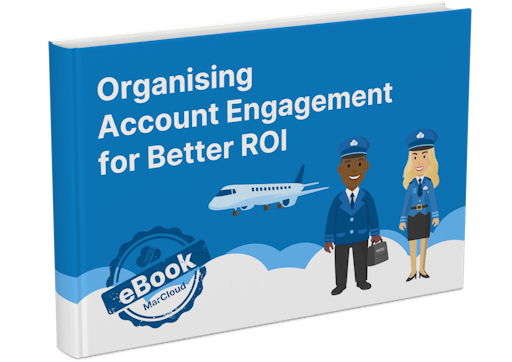
Organising Pardot for Better ROI
Tidying your Pardot account is step one in making your life easier, saving time and increasing return on marketing investment! Here you’ll find a complete guide to organising your Pardot account like a pro – whether you’re working with a new implementation or a mature account that’s in a bit of a mess.
Download now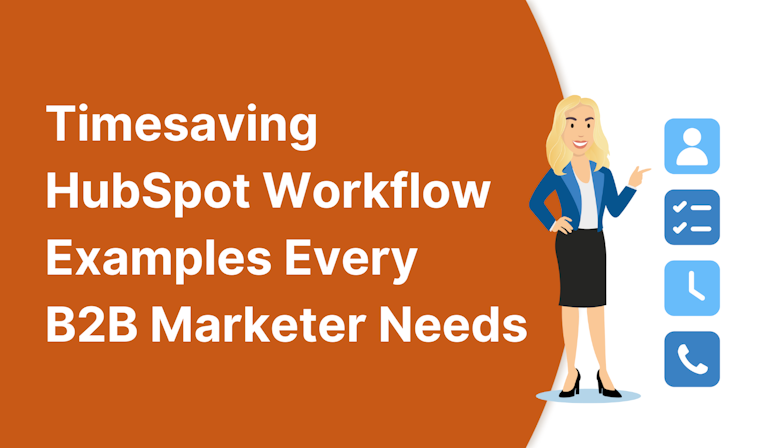

![Coloured background with text How to Measure HubSpot ROI [Free eBook]](https://www.datocms-assets.com/103555/1763939582-hubspot-roi-ebook.png?auto=format&dpr=0.5&w=1568)
